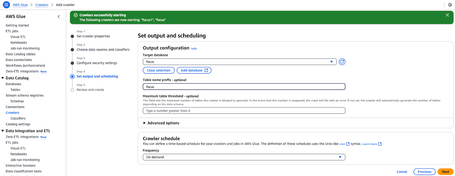What is FOCUS 1.0?
If you're a regular reader of this blog, you’ve probably come across previous posts about FinOps and FOCUS. As a quick refresher, the FinOps Open Cost and Usage Standard (FOCUS) is an open-source specification managed by the FinOps Foundation, designed to standardize cloud usage and cost data.
Its main goal is to unify how cost and usage data are represented across different cloud providers, simplifying financial management in multicloud environments. FOCUS enables organizations to consolidate information from multiple sources into a single, unified format, making financial analysis clearer and more efficient.
The key benefit of FOCUS lies in how it simplifies cloud financial operations. By normalizing data, it allows organizations to analyze costs in a standardized way, making it easier to control cloud spend and enabling smarter decision-making—especially for companies working across several cloud providers. It empowers FinOps and finance teams to spot savings opportunities, detect cost anomalies, and improve budget allocation.
That’s why the announcement from AWS in June 2024 was such a big deal: their AWS Data Exports service now supports report exports in the FOCUS 1.0 format. Until that point, AWS offered its own cost and usage reporting standard: the Cost and Usage Report, also known as CUR or CUR 2.0 in its latest version.
Compared to CUR 2.0, FOCUS—and tools that support it—bring advantages in multicloud normalization, whereas CUR 2.0 is focused solely on AWS. Depending on your use case, FOCUS might be a better fit for organizations operating in multicloud environments, while CUR 2.0 remains the go-to option for teams working exclusively with AWS who need highly detailed cost and usage data (since CUR 2.0 provides the most granular insight within the AWS ecosystem).
What is AWS Data Exports?
AWS Data Exports is a service that enables users to create exports of AWS billing and cost management data using basic SQL queries. These exports are delivered on a recurring basis to a designated Amazon S3 bucket, making it easy to integrate them with BI tools or third-party reporting solutions. Additionally, AWS Data Exports supports integration with Amazon QuickSight, allowing you to deploy a prebuilt cost and usage dashboard in just a few minutes.
Some of the key features of AWS Data Exports in the context of cost management include:
- Recurring exports: You can schedule regular exports of your billing and usage data, available in CSV or Parquet format, making it easier to keep cost analysis up to date.
- Granular control over exported data: With the ability to select specific columns and filter rows using basic SQL, you can customize the export to include only the information that’s relevant for your analysis.
- Seamless integration with analytics tools: Direct integration with Amazon QuickSight enables quick visualization of your billing and usage data through a prebuilt dashboard, streamlining cost interpretation and analysis.
In terms of FOCUS 1.0 support, the following additional features and benefits are worth highlighting:
- Standardized cost organization: FOCUS 1.0 structures cost data into clearly defined columns like ListCost, BilledCost, and EffectiveCost, ensuring that each type of billing data always appears in a consistent column. This makes it easier to reference and compare data across different sources. Discount calculations, for example, become simpler with a single formula like EffectiveCost/ListCost.
- Uniform data structure: To maintain a consistent format, FOCUS 1.0 uses a standardized schema that assigns each billing data type to the same column regardless of the source. It also includes five AWS-specific columns for unique billing information, such as usage types and cost categories.
- Unified values: FOCUS 1.0 enforces standardized field values—for example, service categories and usage units follow a unified format. If a metric is based on time, it will always appear as "Hours" instead of variations like "hr" or "hrs", removing the need for conversions or manual adjustments during data analysis.
As you can imagine, AWS Data Exports’ support for FOCUS is essential for making these datasets usable and meaningful in today’s increasingly multicloud environments. By aligning with this open standard, AWS Data Exports makes it easier to normalize and consolidate cost and usage data from multiple providers—simplifying financial management and enabling more consistent and accurate cross-cloud comparisons.
How Well Does This Partnership Work?
So far, it looks like AWS’s commitment to FOCUS is strong and long-lasting. Proof of this is that just a few months after the initial announcement, AWS had already released an improved version with fewer compliance gaps and general availability across all regions.
As we can see from both the AWS site and the FOCUS website (which references AWS resources), there is an automated solution available to implement this multicloud architecture, including a recommended FOCUS dashboard that can be deployed easily using CloudFormation following the provided guides.

We tested it manually on a single account and, indeed, AWS Data Exports is simple to configure. The service is available from the Billing and Cost console, but you can also find it directly using the search bar.

When setting up the export, you’ll need to configure an S3 bucket where all the data will be delivered in Parquet format.

Using that bucket as a Data Source, we configured a Glue crawler to create the database and table in Glue. First, we configure the data source:

Then, we configure the Glue table (if needed, it can be created in this same step):

Once the crawler is created (scheduled or on-demand), we run it, and it generates the table, which we can access from Athena without any issues:

To access it from QuickSight, we simply need to enable the data source in the QuickSight settings, and we’ll be able to visualize the data and build any dashboard we need. Since the data is in Parquet format in an S3 bucket, it’s also easy to consume from any other tool that supports that format.

As we’ve seen, accessing this data is quick and straightforward, especially when using the tooling AWS provides for multi-account setups (linked above).
Finally, you can explore the columns included in the export as well as the known non-conformities with the standard—which is definitely appreciated to avoid potential headaches.
Conclusions
In summary, the union of AWS Data Exports and FOCUS 1.0 has a promising future and represents a significant step forward in cost management for multicloud environments. Thanks to the data normalization provided by this standard, organizations can consolidate and analyze cost information from multiple providers in a unified way, improving clarity and efficiency in financial decision-making.
The inclusion of features such as standardized cost structuring, data homogenization, and value unification greatly simplifies financial management in the cloud. Additionally, the integration with Amazon QuickSight and the ability to export data in accessible formats like CSV or Parquet allow FinOps teams to streamline their workflows and enhance cloud spend monitoring. The ease of configuration of AWS Data Exports, along with its integration with tools like Glue and Athena, shows that this solution is not only powerful but also accessible to organizations looking to strengthen their financial control in the cloud.
If your organization needs support to implement FinOps practices and make the most of FOCUS 1.0, at Paradigma Digital we can provide the guidance you need to optimize your cloud cost management and boost your financial efficiency.
Comments are moderated and will only be visible if they add to the discussion in a constructive way. If you disagree with a point, please, be polite.








Tell us what you think.